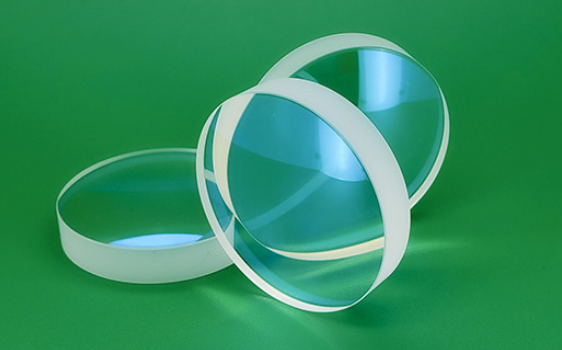Types of Lenses Commonly Used in Laser Systems
Laser systems are essential in many industries, from manufacturing and medical applications to research and communication technologies. A crucial component that determines the efficiency and precision of a laser system is the lens. Different types of lenses are used in laser systems, each designed to focus, shape, or direct the laser beam based on specific requirements. In this article, we’ll explore the common types of lenses used in laser systems and their distinct functions.

1. Plano-Convex Lenses
1.1 What are Plano-Convex Lenses?
Plano-convex lenses have one flat surface and one convex (curved outward) surface. These lenses are widely used in laser systems to focus light. Their simple design makes them ideal for applications requiring minimal distortion and high efficiency in focusing collimated light.
1.2 Applications of Plano-Convex Lenses
Plano-convex lenses are often used in focusing laser beams onto a small spot, making them ideal for laser cutting, engraving, and other precision applications. Due to their low cost and ease of production, they are also commonly found in optical systems for imaging and beam collimation.
2. Biconvex Lenses
2.1 What are Biconvex Lenses?
Biconvex lenses have two outwardly curved surfaces. These lenses are typically used when light needs to be focused more sharply or over a shorter focal length compared to plano-convex lenses.
2.2 Applications of Biconvex Lenses
Biconvex lenses are highly effective in systems requiring precise focus over short distances. They are often used in microscopy, laser scanning, and other applications where the laser beam needs to converge sharply. Additionally, they are useful in imaging systems where maximum focus is required.
3. Plano-Concave Lenses
3.1 What are Plano-Concave Lenses?
Plano-concave lenses have one flat surface and one concave (curved inward) surface. Unlike convex lenses, these lenses are designed to diverge light rather than focus it, spreading the laser beam outwards.
3.2 Applications of Plano-Concave Lenses
These lenses are essential when you need to expand or diverge a laser beam. Common applications include beam shaping, optical systems where beams need to be broadened, and laser alignment setups.
4. Meniscus Lenses
4.1 What are Meniscus Lenses?
Meniscus lenses have one convex and one concave surface. They are designed to minimize spherical aberration, which is a type of distortion caused when light rays passing through a lens are not focused at the same point.
4.2 Applications of Meniscus Lenses
Meniscus lenses are used in high-power laser systems where beam quality is critical. Their design allows them to maintain a highly focused laser beam with reduced distortion, making them suitable for industrial cutting lasers, medical lasers, and precision optical instruments.
5. Aspheric Lenses
5.1 What are Aspheric Lenses?
Aspheric lenses have a more complex surface profile that deviates from the simple spherical curvature of standard lenses. These lenses are designed to reduce aberrations and provide improved focus and precision.
5.2 Applications of Aspheric Lenses
Aspheric lenses are typically used in advanced laser systems where reducing optical distortion is critical. Applications include high-precision optics, such as laser communication systems, medical lasers, and systems requiring high beam quality over a wide range of focal lengths.
6. Cylindrical Lenses
6.1 What are Cylindrical Lenses?
Cylindrical lenses differ from traditional lenses in that they focus light in only one dimension, rather than two. They have a curved surface along one axis and a flat surface along the perpendicular axis.
6.2 Applications of Cylindrical Lenses
These lenses are used when you need to shape a laser beam into a line or ellipse. They are commonly applied in laser scanning, barcode readers, and laser diode systems where beam shaping is necessary for the task at hand.
Conclusion
Understanding the different types of lenses used in laser systems is critical for optimizing performance, whether for industrial manufacturing, medical procedures, or research applications. Plano-convex, biconvex, and aspheric lenses focus beams, while plano-concave and cylindrical lenses help shape or diverge the light. Choosing the right lens type based on your specific laser application ensures better precision, improved efficiency, and reduced optical distortion, leading to superior results.

